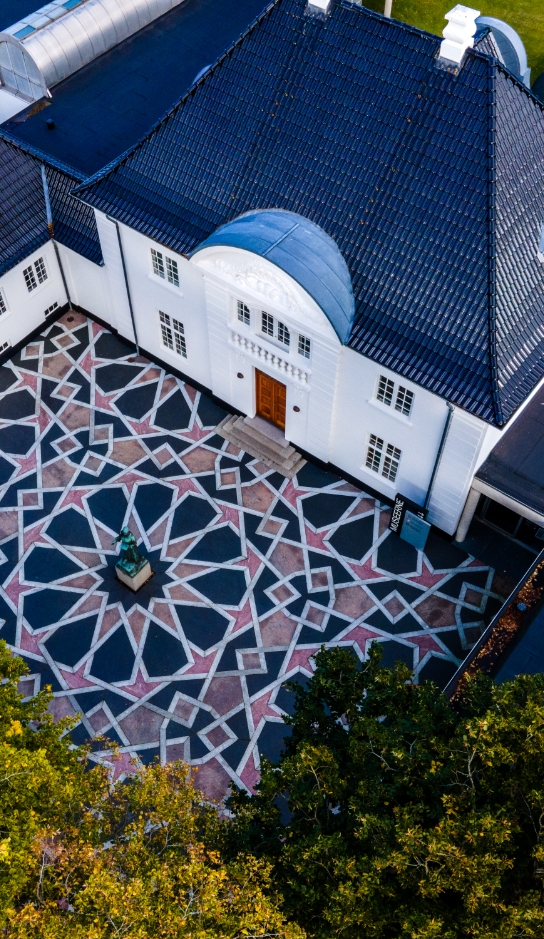Undercurrent – Appreciation of Nature and Mental Landscapes
Collection
Kirsten Klein (b. 1945), Inge Lise Westman (1945-2024), Lene Bødker (b. 1958), Pipaluk Lake (b. 1962) and Tobias Møhl (b. 1970) reflect in their work a spirituality in which nature is animated by a force beyond human comprehension.
There is a special appreciation of nature at play which speaks into our mental landscapes and calls for a sense of wonder and connection with nature. This builds a bridge between the great dramatic landscape and the small intimate nature, but also between our mental landscapes and the physical landcapes of nature.
Perhaps it can be said that the works in the exhibition evoke a special kinship and a connection between man and nature; an appreciation of nature? Like an undercurrent of organic movement in the intertwining of our inner landscapes with the outer landscapes of nature.
Kirsten Klein - The many faces of the landscape
With her poetically animated landscape photographs, Kirsten Klein follows on from previous natural romantic currents. The works may at first glance, due to their sensitive texture, resemble paintings. Klein's photographs inspire a rediscovery of infinity and poetry in the world around us. She shows the many faces of the landscape, from the harsh to the gentle, and you can almost hear the sea roaring, the tide trickling and the wind whispering in the trees. When encountering her sensuous images, in almost scenic compositions, a sense of longing is evoked; for the unspoiled and a union with the great forces of nature, of which we ourselves are a part. As from an unprecedented vantage point, one looks with new eyes at an enchanted nature that calls to us. Due to her photo-technical skills and knowledge, Klein is able to capture the alternation of light and the seasons by means of dramatic contrasts. In her artistic universe, nature is not just a framework for people's movements and lives; it speaks to us through the clouds, the trees and the wind about vanitas - the transience of all things.
Inge Lise Westman - Micro- and macrocosmic character
Inge Lise Westman's condensed paintings are both micro- and macrocosmic in the sense that they direct the mind towards swells on the sea surface and remote star mists at the same time. Focus is made on the smallest of organisms while glances are thrown into space. The marvelous patterns of the image surface seem both refined and spiritual similar to the glass artist Tobias Møhl's ornamented richness of detail.
Tobias Møhl - Dancing ornaments beneath the surface of the glass
Tobias Møhl masters the classic pastorelli technique, where the starting point is clear glass with embedded strings of colored glass. It is this - sophisticated - technique that produces the marvelous mosaic patterns which, in the interplay with the transparency of the glass and Møhl's simple and pure forms, create the refined and spiritual expression that characterizes his works. Ornaments dance like mythical creatures beneath the surface of the glass.
Lene Bødker - Tensions and contradictions
Lene Bødker's nature-inspired works mix with narrating sculptures that connect us with the great tales of creation, life and death. The deepest story for Bødker is that we are nature. Man does not exist merely in cohesion with nature; we are inextricably linked to its energies and forces. In Bødker's creative process, she engages with the material; creating intuitively in a kind of meditative state of calmness and presence, which results in the works' living and organic form. She integrates tensions and contradictions in her works: deliberate versus random, exterior versus interior, opaque versus transparent, fragile versus robust and heavy versus light.
Pipaluk Lake - As something manifesting itself
Built-in contradictions are also inherent in the works by Pipaluk Lake. Here as the contrast between the hard, sharp, solid material and the soft and organic form. The impressions that the metals leave on the glass give the works a defined surface. But at the same time, they have the characteristic depth, clarity and lightness of the glass. Lake's works seem animated with a spirit of nature, which manifests itself with such a force that the material seems alive – as something manifesting itself.
Is it through nature that we gain access to the landscapes of the mind? Or is it through the nature of the art works; their motifs and materials that we are called out into a reenchanted nature?

